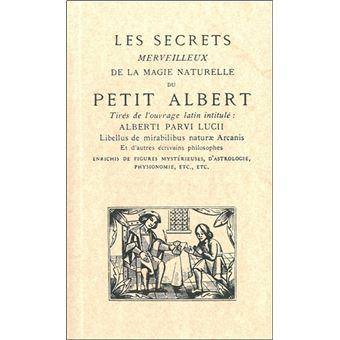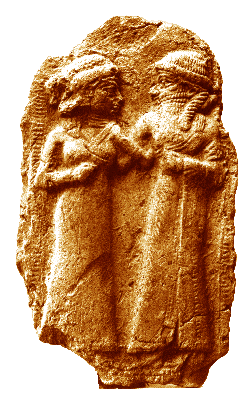This article is part of a collection on sorcery and witchcraft prepared and supervised by Ahlam al-Taher
“Get up at dawn before sunrise on Friday, and go to a fruit orchard. Choose the nicest tree and pick the best apple you can find. Then write with your blood your name and surname in one line on a small white paper, then on the next line the full name of the other person you want to ensnare. On a second white paper write one word: (Bathsheba’). Fold the two papers, and tie them with three of your hairs and another three hairs from the person in question. Open the apple in half and get rid of its seeds, and put the two hair-linked notes in their place. Join the two halves of the apple back together and put it in the oven until it dries, then wrap it in myrtle and bay leaves and hide it under the bed of the person in question without his/her knowledge”... This folk remedy/recipe came from Le Petit Albert a grimoire and book of secrets on natural and cabalistic magic that spread in France during the nineteenth century, providing tools and rituals for ensnaring and captivating a desired lover.

It’s time to talk about desire and love as an industry. Who among us has not wished at least once in their life, to find a magic spell or concoction that would stir up feelings of love and devotion in the heart of someone they love? These are phantasies that, with Tobie Nathan, Professor of Clinical Psychology at the University of Paris 8, take their concrete real form. In his book ‘The Magic of Love’ (2013), the psychological anthropology specialist relies on the invisible forces that manage the affairs of love, and illuminate the paths of magic for us, starting from the Parisian Notre Dame Church, all the way to “The Land Between Two Rivers” (Mesopotamia). Nathan does not believe in the spontaneity of feelings, but in the practices of ancient ancestors and various magical remedies, prayers, and rituals to spark the flames of love at any time. He does not shy away from explaining how to make a charm to bring the desired lover and object of affection into the lecture hall. He also warns us that it is useless to resort to a psychologist (like himself) in order to capture and ensnare the person in question in our webs, or salvage what remains of the wreckage of our love lives, for there is always a shaman or a sorcerer close by, just ready to offer us more effective solutions.
It’s time to talk about desire and love as an industry… The practice of sorcery and witchcraft, and transforming the world into what we desire
The Visit
We went to see “The Silent One”, as if she has been created just to stay quiet. This is an essential prerequisite for the magic ritual to succeed according to the customs prevalent among women. I did not ask for the services of this ‘spiritual healer’, but I was able to accompany a client of hers after having spent a long time and effort convincing my neighbor that it was for a research project I was working on. I swore to protect her privacy and not mention her name or age, so she allowed me to accompany her after she made me don an elaborate disguise with the clothes of a cleaning lady. She also forbade me from using a car or taxi to get there, because this may suggest a higher social status and thus tempt her to raise the price of her services.
I was preparing a set of field reports on traditional protection and healing practices — both religious and magical — as well as suggested therapeutic rituals as an answer to alleviate suffering. The reports involve analyzing the components of the ritual, its stages of implementation, and the people involved in its actualization, as well as the motions and sayings that furnish its realistic and symbolic space. The choice fell on a well-known therapist in the city of Oujda in eastern Morocco.
We walked into a small, modest house on the first floor, where an old widow in her seventies would move from the waiting room to the kitchen where she keeps her simple tools behind a curtain.
Divide the paper into 4 pieces and spread them on the floor. Hand the customer a pen and ask her to write the phrase: “Oh (name), son of (name), may God make me sweet in your mouth like the taste of tea, until you set foot in my bed and your head lies by mine”
She told us that she inherited this profession. She has been continually practicing it for twenty-five years, and she specializes in a ritual known as “al-khafeef” (molybdomancy or casting lead) which helps cure “reverse” cases and disrupted livelihoods, facilitates relationships, brings one’s beloved closer, facilitates businesses, and lifts wicked magic and evil charms.
Following a previous visit where she examined her with “al-khafeef” (molybdomancy; practice of casting lead) to identify the source of the problem, a second treatment session was agreed upon. The customer was asked to bring with her a number of items from the shop of the “al-attar”, who — from his behavior — made it seem like these items were in great demand and that they were very commonly used, so much so that he knew the needed items by heart: the Hab el Aziz (yellow nutsedge), rosary peas (abrus precatorius beans), a hoopoe bird, a piece of animal skin, a jade plant, and musk.
For the ritual to be “accepted”, the healer mixes these herbs and animal items and recites incantations over them, mentioning the name of the woman and the person or persons that the customer wants love and devotion from. Or she may just say the name along with the purpose of the visit, since some go to her seeking luck in work or marriage, or success in public relations and fame in some art or profession... The ingredients are placed in a bundle from a cloth, are tied with a thread, and handed over to the person in question to carry with her at all times. It is usually called “al-kamusa” or “al-surra”.
He Will Come and Drink Tea With You
As for the ritual meant for ensnaring and captivating a desired lover, it requires other ingredients and components: a picture of the client and the object of his/her affection, a sugar mold, sugar paper (which is blue paper that is wrapped around a sugar mold), a tea box, a lock, a key, water, match sticks, and a metal pickaxe (tool used for gardening) without its wooden handle.

The ‘spiritual healer’ begins the ritual in something that resembles a role-playing of sorts, placing the two photos facing one another, with a locked padlock between them. She leaves them aside until she finishes the second step; As she divides the sugar paper into four pieces, and spreads each piece of paper on the floor. She then hands the customer a pen and asks her to write the phrases she recites, which translate to the following: “Oh (name), son of (name), may God make me sweet in your mouth like the taste of the tea, until you set foot in my bed and your head lies by my head…” Then she divides the paper that was written upon into four, adds a generous amount of tea and sugar on each piece, and binds each in the form of a small pouch. She takes the four pouches and hands them to the client to make tea, assuring her with the words: “He will come and drink tea with you.” Then, she breaks the lock and throws it aside, signifying the removal of the barrier between them. She then ties the two photos with each other and passes them through the opening within the handle of the pickaxe, chanting prayers and incantations all the while. And when she has passed the two pictures through the opening for the seventh time, she makes the customer light a fire, burn them, and sprinkle their ashes on top of the tea and sugar.
Summoning Supernatural Powers to Lure Others into Love
My neighbor gave in to the possibility that she may be able to realize a hidden desire that people always seek to suppress or silence under the pretext of objective scientific thinking, conceding to prevalent logic, and accepting the status quo. Her mood improved and she seemed much lighter after leaving the session with the ‘spiritual healer’, as if she was carrying a secret with her that would solve all her problems with her beloved. As for me, I found myself in the middle of a game full of cultural subtexts and overtones. The symbolism of the sugar mold in Moroccan culture is linked to all kinds of celebrations, rites of passage, weddings, and family gatherings, which gives it its own sanctity in the collective imagination, in addition to the symbolism of the lock, the key, and the pickaxe of the farmer, which carries connotations of fertility, produce, and plowing the earth. This ritual is also subject to all the conditions that make up the rituals recognized in ethnology, and respects the stages that deliver them, but we won’t enter into a specialized analysis, since we are more concerned with the constant pursuit of women to “produce” feelings of love. We are not saying that love has always been the result of some sort of manipulation, but since ancient times, several techniques have been devised in order to achieve this goal. These techniques were formed in the Mesopotamian civilization and we can see the same principles carrying on to this day.
Summoning supernatural powers to lure others to love... The practice of sorcery and witchcraft in modern times in Morocco
Modernity was not able to get rid of these rituals. On the contrary, it has caused them to multiply. Nathan says, “Our conception of love and marriage, and all the stories that have invaded our screens and shaped our imaginations, are based on the assumption of the spontaneity of love. It can even be seen as an axiom that shapes the depth of the individual and the bedrock on which today’s societies are built on. But it is important to shine a light on feelings of love from a new angle — that is, as a state or condition that was deliberately brought about by another party. Once we put things in such a manner, we get a richer and more complex concept of love, which here turns into one of the most important forms of influence. We willingly accept the idea that certain tools of influence can push us to buy clothes or a car. We also acknowledge the power of this influence in our daily lives along with the difficulty of escaping from it, but we still do not accept it in love!”
O’ Pebbles of Love… Help Me
Since ancient times, man has not stopped trying to “create” feelings in others. Either he is secretly and desperately in love with someone and is looking for a mediation of sorts, or in more complex situations that we rarely acknowledge — the state of a person who got greedy and wants to get his hands on an inheritance, for instance, and wants to “capture” another person. Ancient Greece, since the sixth century BC, was obsessed with these types of cases, and public trials were held against people suspected of having resorted to love magic and witchcraft.

Caption: Ishtar and Tammuz
The sons of ancient civilizations knew the dangers of love; When one tries to make the other fall in love with him, he eludes his emotions, deceives him, manipulates his life, and “possesses” him.
As for the Greeks, who developed mathematics, philosophy, and politics, and were extremely rational, they were also sure that feelings of love were produced by some techniques which, in that society, just like in other societies, was associated with Greek gods. Like Inana-Ishtar, who later took different names. She is Venus or Aphrodite.
People have always asked Ishtar (aka Inana) to invoke love using magical games, trinkets, riddles, charms, and statues. One of these riddles dates back to five thousand years, where a recitation is repeated three times on an apple or a pomegranate in order to summon the mythical goddess: “Rise and fall, pebbles of love, help me, it is Ishtar who presides over our love.” Then the apple is presented to the person in question to bite into it.
On the battlefield, the goddess’s ability to fix fates ensured victory. In love magic, Ishtar’s power could alter romantic fortunes. In ancient love charms, her influence was invoked to win, or indeed, capture, the heart (and other body parts) of a desired lover.
Raseef22 is a not for profit entity. Our focus is on quality journalism. Every contribution to the NasRaseef membership goes directly towards journalism production. We stand independent, not accepting corporate sponsorships, sponsored content or political funding.
Support our mission to keep Raseef22 available to all readers by clicking here!
Interested in writing with us? Check our pitch process here!






